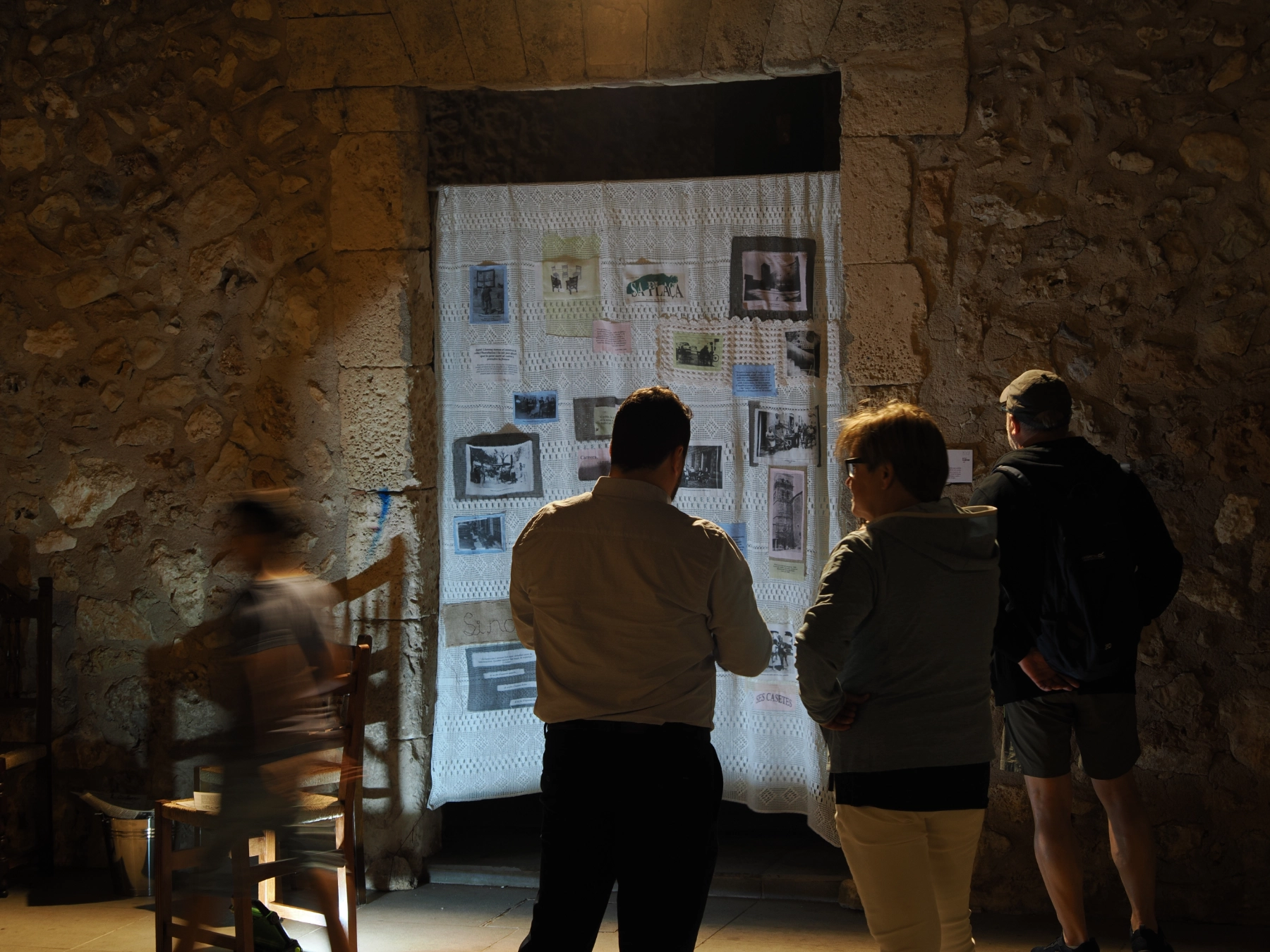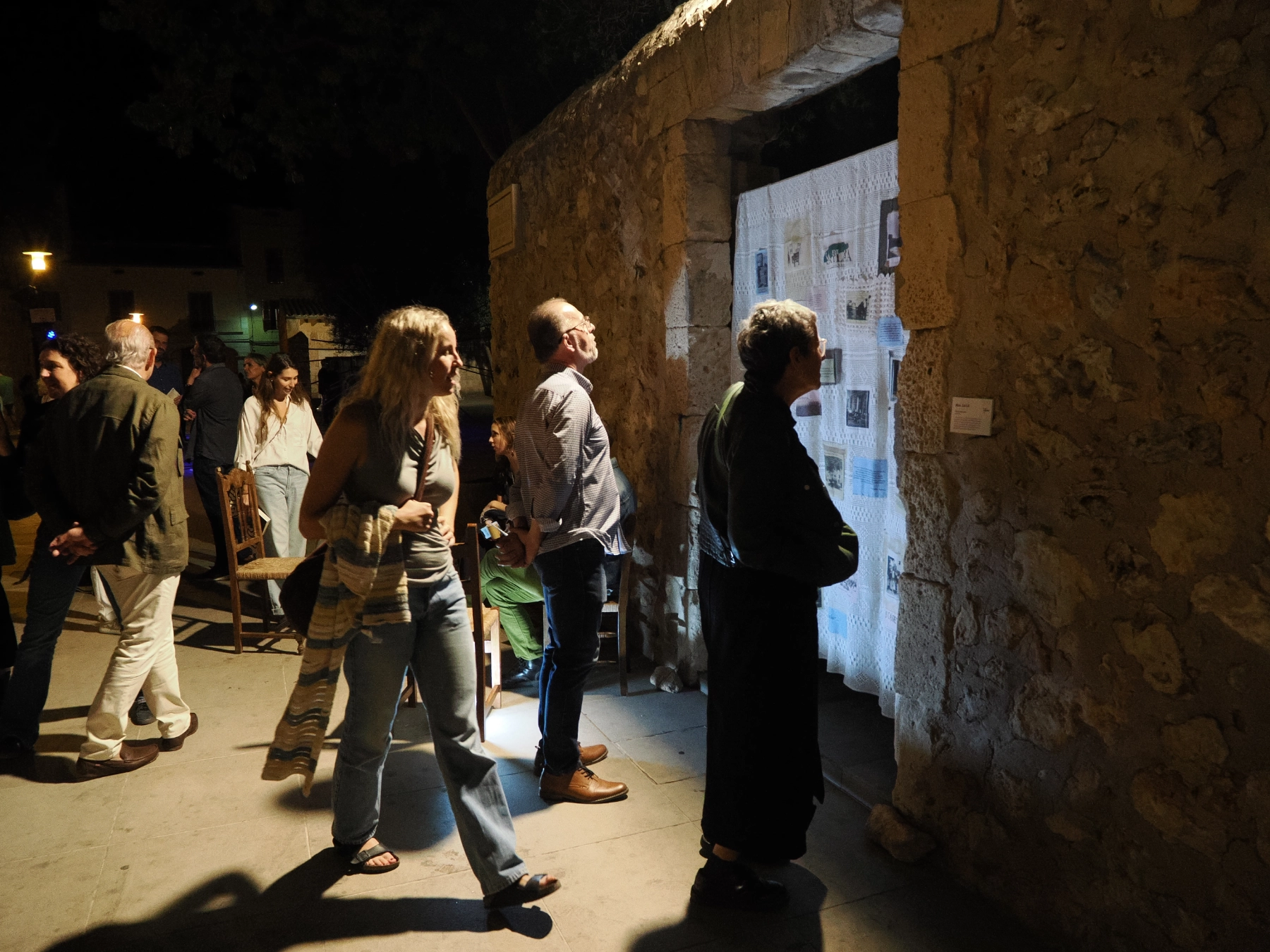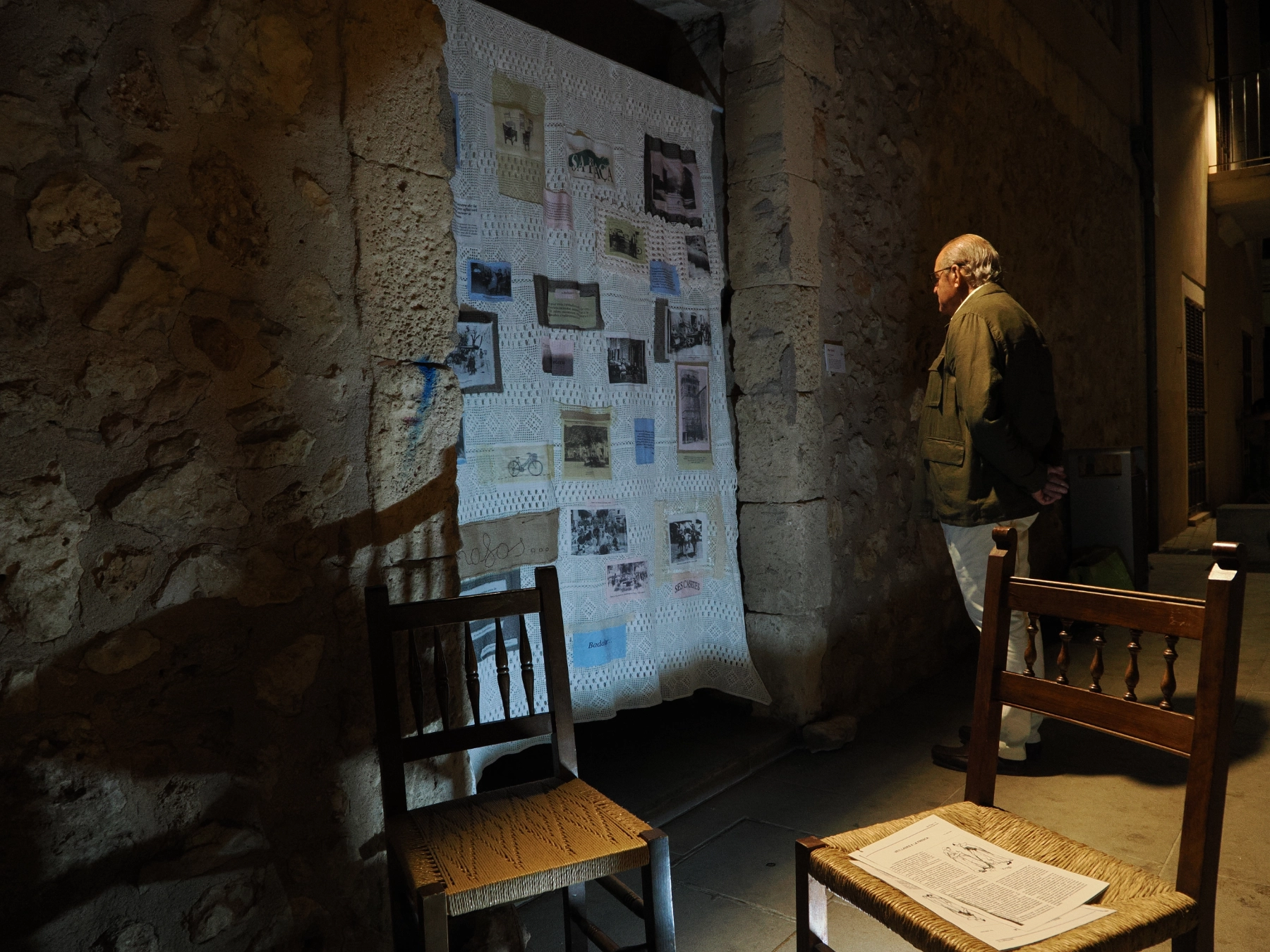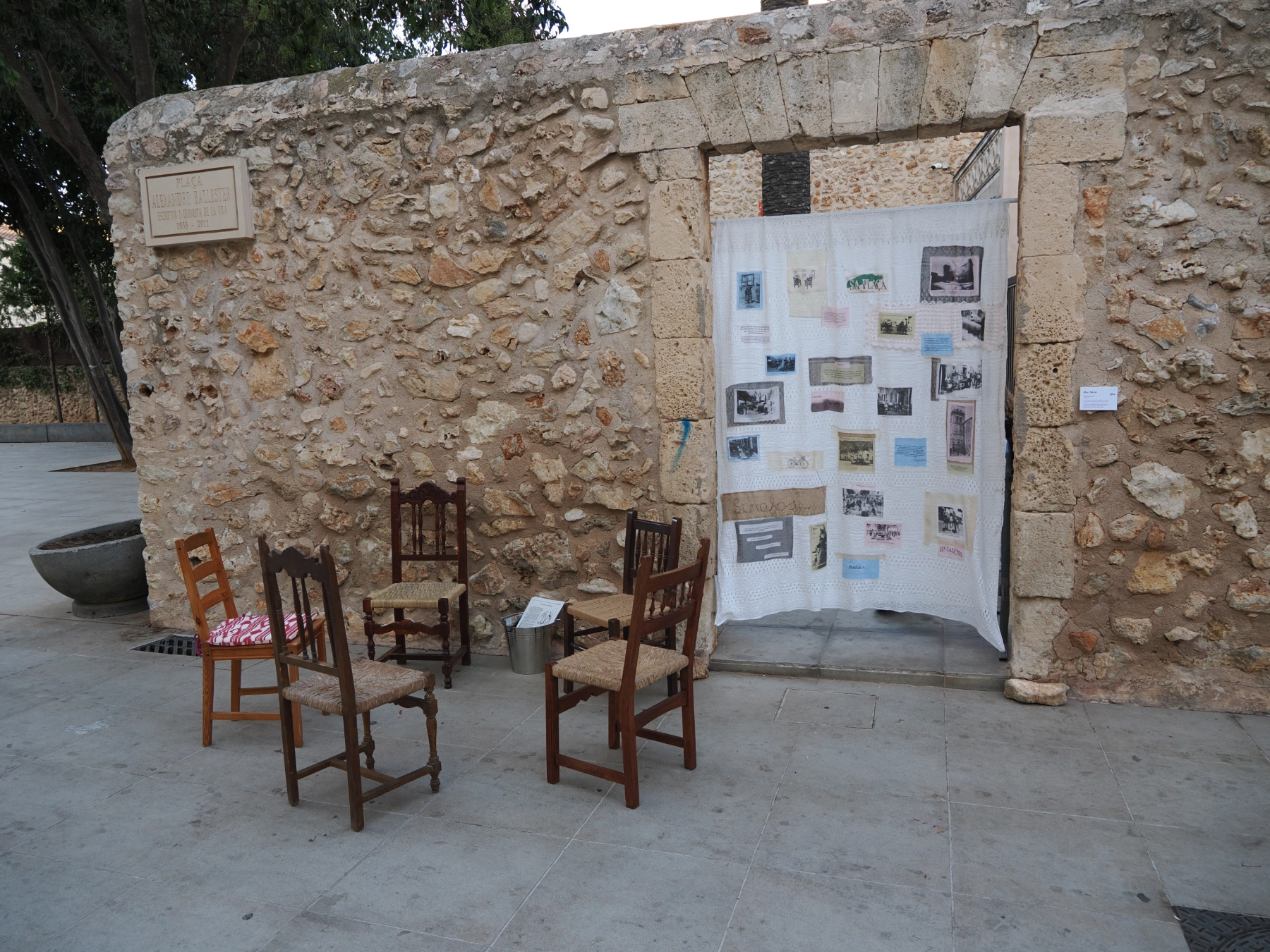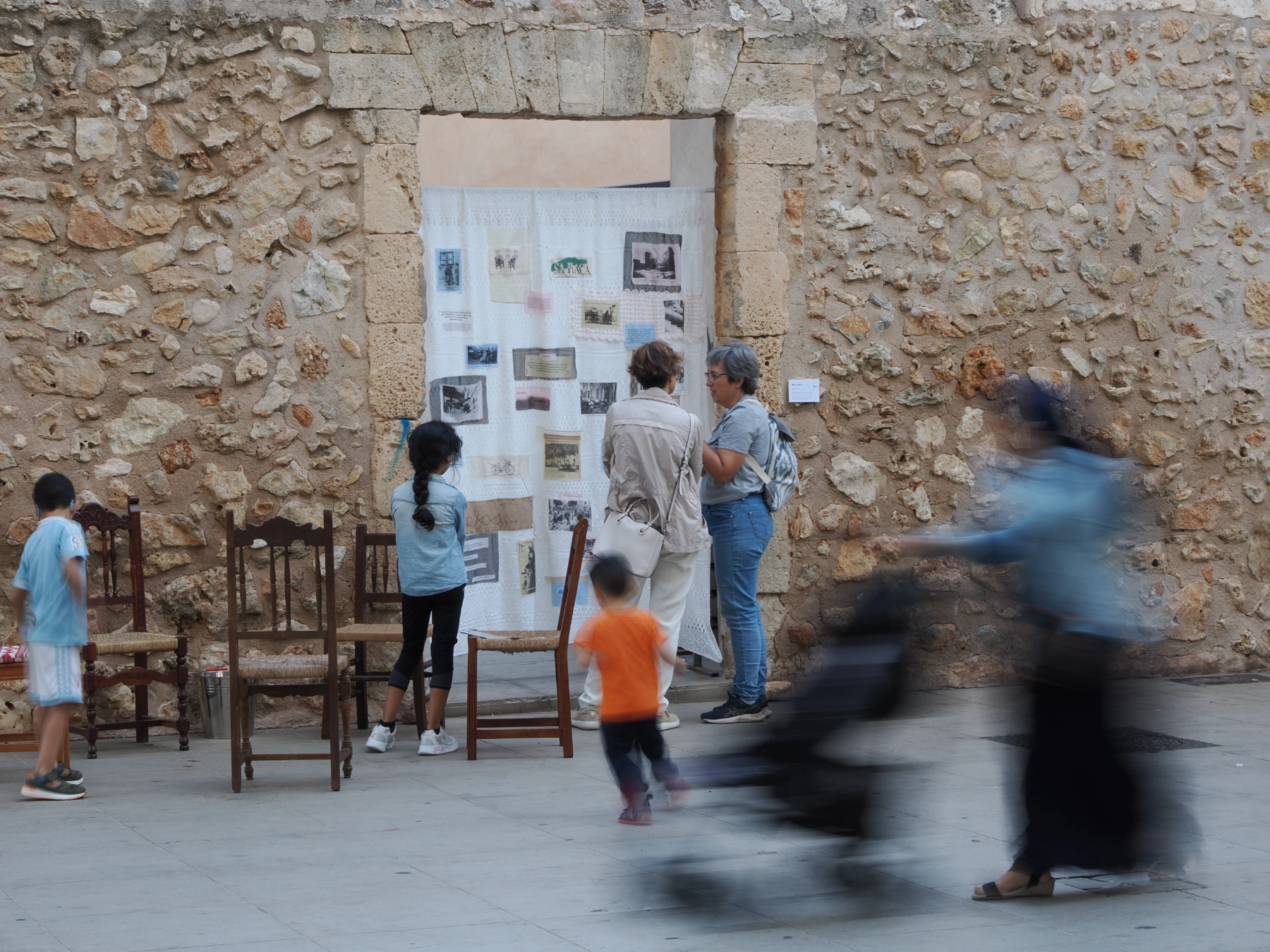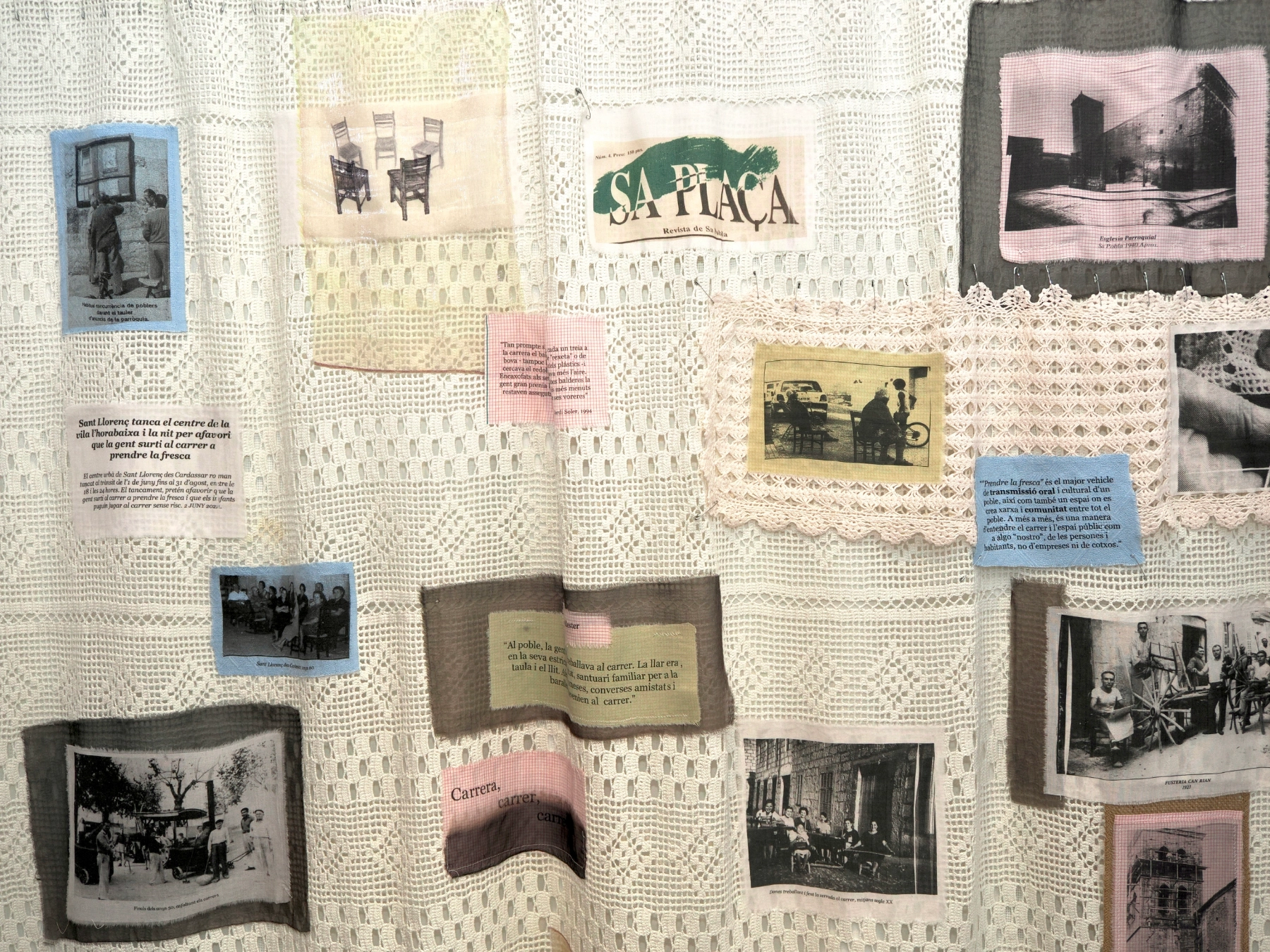
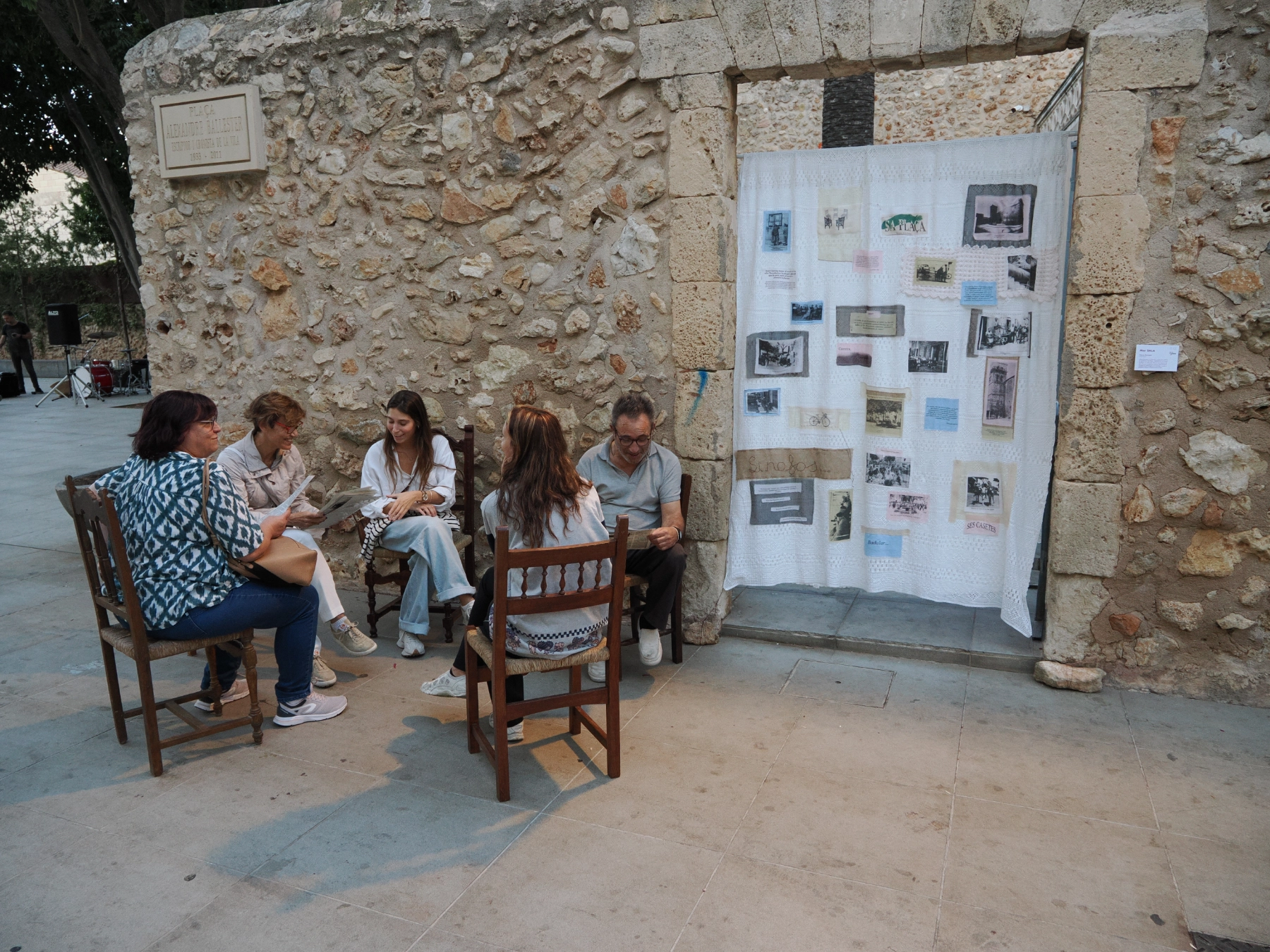
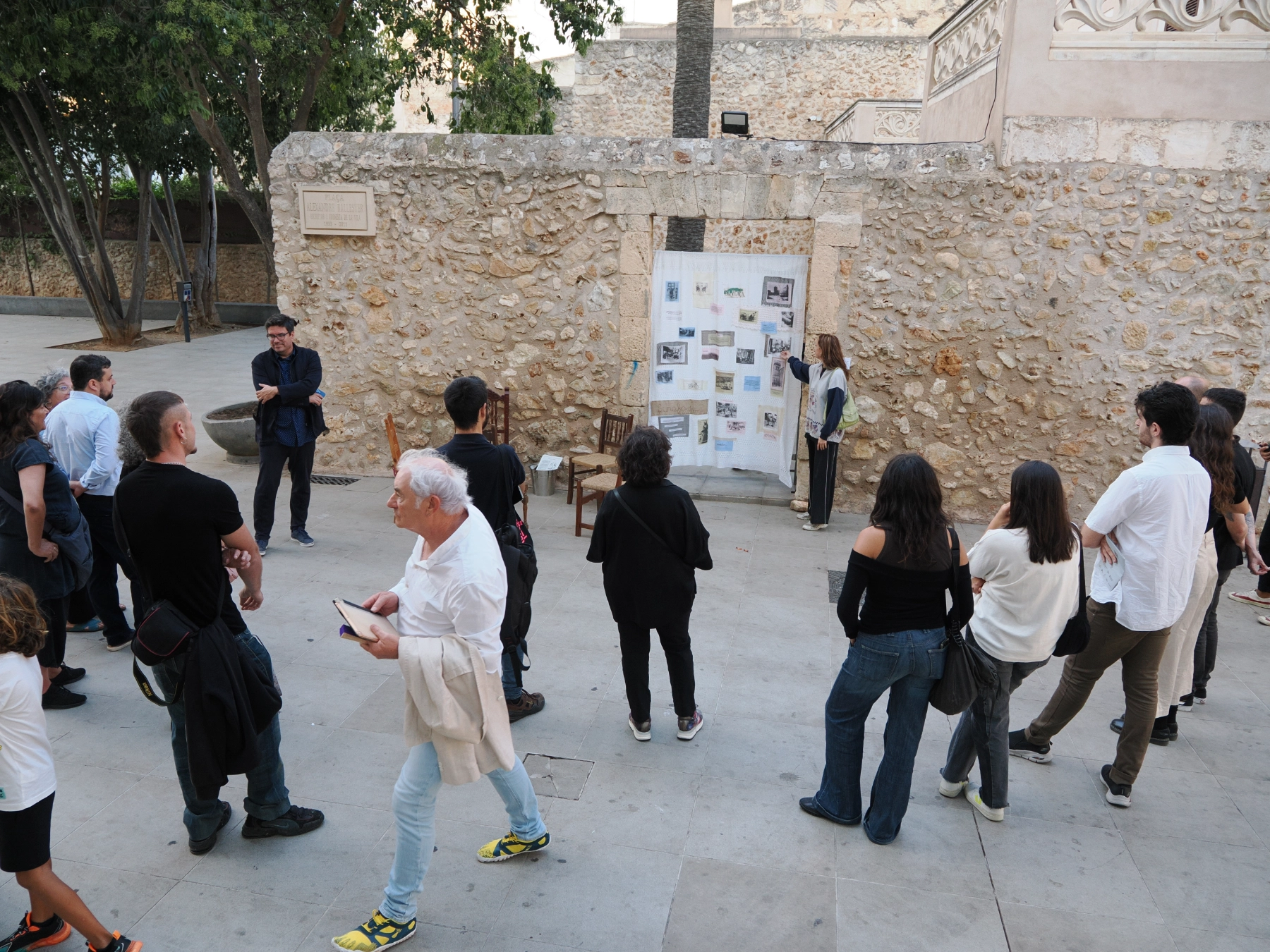
20.09.24-20.10.24
Art Jove Illes Balears : Sa Pobla
"Hora foscant" is the title of an article published by Jordi Soler (Sa Pobla, 1942-2024) in the magazine Sa Plaça, where he talks about the games children used to play in the streets while their mothers sat outside to enjoy the cool air. From the start, I wanted to explore a tradition shaping Mallorca and the Mediterranean but now disappearing. Prendre la fresca - which refers to the act of sitting outside in the streets on hot summer nights, usually being elder women chatting with neighbors as the kids play around -has faced threats from modern life: cities, cars, television, and tourism shifts. More than just a pastime, it is a political and social act: occupying public space, preserving oral tradition, pausing to observe, and building community.



For the creation of this piece, I consulted around 50 volumes of this magazine at the Sa Pobla Municipal Archive. I spent hours there reading articles, photographs, interviews, advertisements, and news from this and other magazines to understand what Sa Pobla was and what it is today. But I also realized that to talk about the town, one must also "live the town," as 87-year-old Sa Pobla resident Llorenç Barrerroig told me—a man who knows a lot about this place and also has many controversial opinions about it.For this reason, I spent mornings, afternoons, and mid-days immersing myself in Sa Pobla, and little by little, I saw how my expectations, preconceptions, and beliefs about the place were challenged by the town's reality.
Arriving in Sa Pobla, I had hoped to find elderly women still prenent la fresca in the afternoons, but they were gone. Reading magazines from 1992-1995, I realized this wasn’t recent—Jordi Soler had already written about its decline in "Vetllades a la fresca." The cause wasn’t just air conditioning, as I had assumed, but the tourism model: women waking early for hotel jobs, locals spending summers away, as well as a change in the use of the streets. People use to live in the streets, but now people live more indoors and cars inhabit the streets.
My project began as a search for these women, but when they were no longer there, I had to work with the past. The result is an installation honoring prendre la fresca on summer evenings, as well as an insight into how the streets of Sa Pobla have changed overtime. Using the archive, Jordi’s articles, and conversations with locals, I created a street installation with chairs and objects, inviting spectators to sit, read Soler’s articles, and experience the act itself. Behind the chairs, curtains—like those from a home—hold embroidered texts, images, and fabrics, capturing what I discovered throughout this journey.

